Paddle Board Age Limit: Why Is This Sport for All?
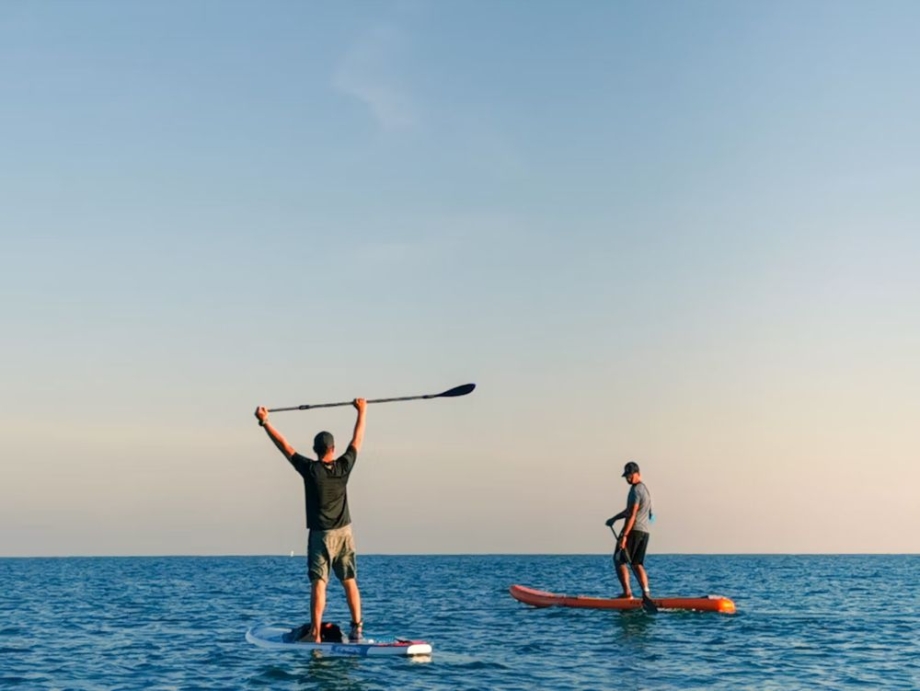
Are you curious about the paddle board age limit? Paddle boarding is different from other activities in that it can accommodate everyone regardless of their age. It’s a fantastic way for families to bond and for individuals of all fitness levels to enjoy the outdoors. While there are no specific age limits, safety is paramount.
In this article, we will look at some essential factors and useful tips to help ensure that adults and children can enjoy safe and fun paddle boarding experiences regardless of age. Let’s get started!
Does a Paddle Board Age Limit Exist?
No. There isn’t a universal paddle board age limit. Stand-up paddle boarding is known for its accessibility, and with the right approach, even young children or senoirs can enjoy this activity.
The key factors influencing a suitable starting age are an individual’s physical development and comfort level in the water. While the learning curve is not as steep as that of other water sports, some young children might feel overwhelmed by the first experience.
The beauty of SUP lies in its ease of learning. Unlike surfing, there’s minimal balance required to kneel or sit on the board, making it suitable for younger participants. Therefore, instead of considering the paddle board age limit, the focus should be on choosing the right conditions, proper instruction, and appropriate safety gear.
How Can Kids Start Paddle Boarding Early?
There isn’t a strict paddle board age limit, but introducing children to the activity can be done progressively. Once a child reaches 5 years old and demonstrates confidence in the water, they can attempt to paddle independently on a child-sized board. However, comfort and water skills are the priority. If your child is apprehensive about water, waiting until they feel more at ease before starting paddle boarding is advisable.

Tips to Paddle Board with Kids
Now that you’re prepared for a fun day on the water, let’s dive into some tips to ensure a smooth and enjoyable paddle-boarding experience with your little ones!
- Practice On Land First: While there isn’t a universal paddle board age limit, introducing the concept beforehand can significantly enhance your child’s first experience. First, start on grass. Kneel on the board (like paddling), then practice standing to find balance. This dryland prep builds confidence for catching real waves later.
- Start In Calm And Shallow Water: Look for a calm spot with shallow, sandy water. Avoid strong currents or obstacles, and enjoy the peace of mind that shallow water offers – a quick dip if they fall is no big deal. As they get comfortable, you can explore deeper waters together.
- Get Your Child On The Board First: Let your child get acquainted with the board in shallow water first. This helps them feel comfortable and practice balance. It also avoids any wobbles if you climb on first. When they’re ready, join them on the back, keeping your weight centered for a smooth ride together.
- Tandem Paddling First: For younger children or those who lack confidence, consider tandem paddling initially. You guide from the back while your child sits in front, giving them a sense of the water and paddling. As their confidence grows, you can gradually let them take control.
- Try Kneeling Before Standing: Kneeling is steadier and helps them sense the wave’s movement. Once comfy kneeling, they can try standing with your gentle help. Holding your life jacket or board for balance eases the move to standing. Kneeling is like a practice step for surfing tall.
Paddle Board Size for Kids
Now, let’s look at another important factor: choosing the suitable board length for your child.
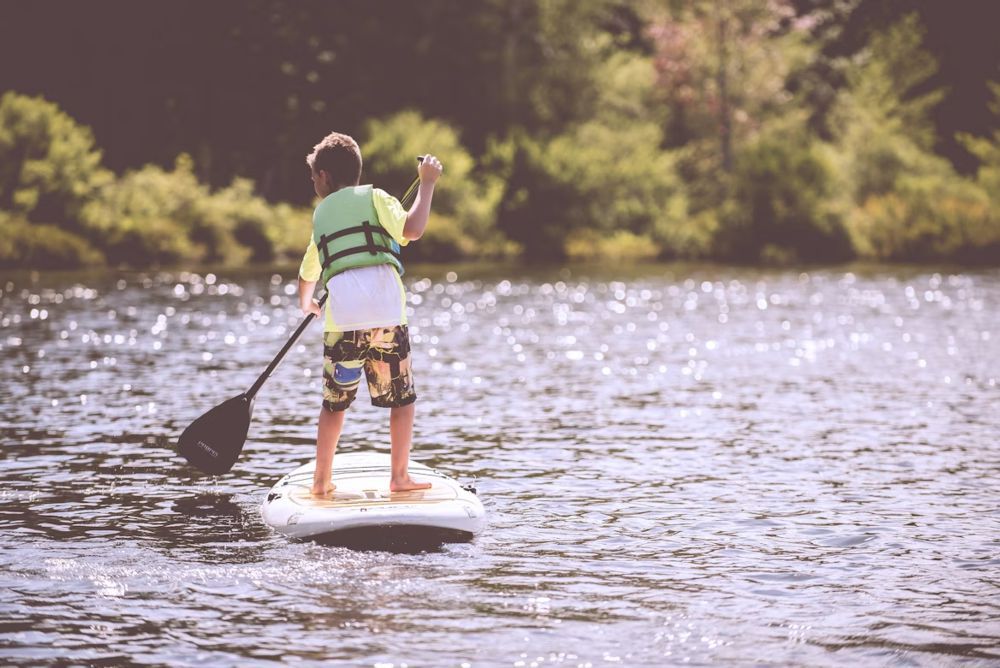
- Your Kid’s Paddle Board Should Go Beyond 9 Ft: While there is no definite paddle board age limit, the size of a board should match that of a child and his/her skills. For young paddlers or beginners, a shorter board (ideally under 9 feet) is a great choice. It’s lighter to carry and easier to balance on, making those first wobbly attempts more successful.
- Choose a Stable Paddle Board: Consider stability when choosing a paddle board for kids. Wider, thicker boards offer a more balanced platform, helping them stand up and stay there. A stable board builds confidence, letting them focus on paddling and having fun.
- The Thicker, the Better: For younger or lighter children, a thicker paddle board (5 or 6 inches thick instead of 4 inches thick) is a great choice. It helps them stay afloat more easily because it floats better on the water. This makes it more fun to learn and less wobbly in small waves.
- Consider an Inflatable Paddle Board: Inflatable paddle boards are a good choice for kids. They’re lightweight and deflate for easy storage, perfect if you have limited space. While not as stiff as hard boards, they’re great for calm water paddling because they’re wider and more stable, ideal for young beginners.
Safety Recommendations
Here are some essential safety recommendations to remember when introducing your kids to the wonderful world of paddle boarding.
- Wear a Life Jacket: There is no mandated paddle board age limit, and children as young as five can paddle board under supervision. Life jackets are an essential part for your children. Look for one approved by the U.S. Coast Guard and sized for your child’s weight. Even weak swimmers can stay afloat with a life jacket on if they take a tumble.
- Bring Additional Safety Gear: For young paddlers, consider extra safety gear beyond life jackets. A leash keeps the board close by, and a whistle helps signal for help if needed. Hydration is necessary, so pack plenty of water. Sun protection with hats, rash guards, and sunscreen is a great idea for a fun and safe paddle.
- Make Sure Your Kids Can Swim: Life vests are great, but for paddle boarding, basic swimming helps kids navigate the water and get back on the board if they fall in. If your child isn’t comfortable swimming yet, consider starting with pool play or shallow areas to build confidence before hitting the open water.
How Can Seniors Start Paddle Boarding?
While some might think paddle boarding is reserved for younger generations, the truth is there’s no upper age limit for paddle boarding. It can be a fantastic way for seniors (50 years old and up) to stay active and enjoy the outdoors. Let’s delve into how seniors can get started with this fun and rewarding activity.
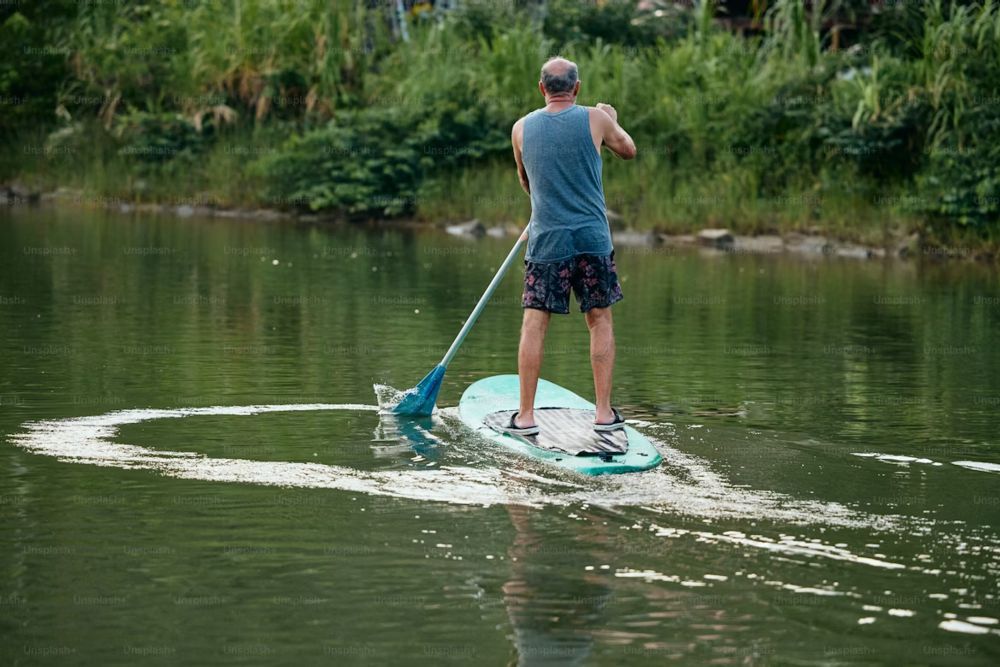
Benefits of Paddle Boarding for Seniors
While there isn’t a strict paddle boarding age limit, the wonders of paddle boarding can be especially beneficial for seniors. Let’s explore why:
- Low-Impact Workout: It’s a gentle, low-impact exercise that’s easy on your joints. The water supports your weight, reducing stress on knees, hips, and ankles. This makes it a perfect way to stay fit and build muscle without the risks of high-impact workouts.
- Mental Health and Well-being Improvement: Paddle boarding can be a gentle mood booster for seniors. Gliding on calm water surrounded by nature creates a peaceful atmosphere, reducing stress and anxiety. The rhythmic paddling can be almost meditative, promoting focus and a sense of well-being.
- Sense of Accomplishment and Self-confidence: Paddle boarding offers a gentle way to stay active, even for older adults. Balancing on the board can be a fun challenge, and paddling alongside friends or family provides opportunities for social connection.
5 Tips for Seniors to Master Paddle Boarding
The following are some tips that will enable the seniors to master paddle boarding and glide on the water with ease.
- Begin in Calm, Shallow, and Flat Water: Focus on calm areas like sheltered bays or lakes for a gentle introduction. These flat waters are ideal for mastering balance and paddling at your own pace, building confidence and enjoyment in a safe environment.
- Proper paddle technique: Seniors can enjoy paddling by taking slow, controlled strokes, reducing strain, and making it easier to find your center. When standing, a wide, relaxed stance with feet parallel and hip-width apart helps distribute weight for better stability.
- Kneeling Instead of Standing: Kneeling offers more stability with a lower center of gravity, making it easier to balance. As you get more comfortable and confident, you can gradually progress to standing at your own pace.
- Use a properly sized paddle: For many seniors, a paddle reaching their chin-to-nose area when held vertically is a good fit. This length promotes a natural paddling technique and may help prevent fatigue during your kayaking adventures.
Boost fins can make paddle boarding a breeze for seniors!
These electric fins add a little zip to your board, so you can glide over the water with less effort and more fun. No need to paddle hard; let the electric fin do the work. It’s perfect for enjoying longer rides without getting tired, making every paddle boarding adventure joyful and accessible, no matter your age or strength.
Safety Recommendations
Besides the paddle board age limit, let’s explore some key safety tips to ensure a fun and worry-free paddle-boarding adventure.
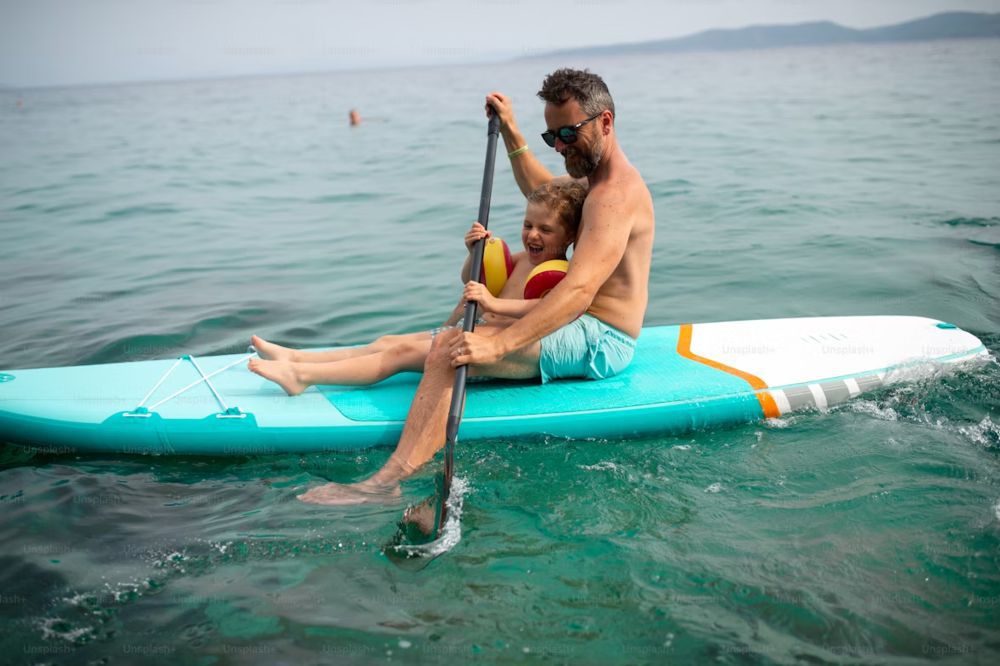
- Use a SUP Leash: A leash keeps the board connected to your ankle, so you can easily grab it and get back on. This is especially helpful for seniors, who might have trouble swimming after a loose board.
- Wear a PFD: Life jackets are a great idea for all paddlers. While there is no specific paddle board age limit, seniors must wear a PFD due to potential balance challenges and unexpected situations on the water.
- Paddle Boarding with a Friend: Having company provides a sense of security and can be helpful in case of unexpected situations. If you must go solo, let someone know your plan and estimated return time.
- Know When to Stop: Paddle boarding is enjoyable, but you should listen to your body. Take breaks and finish paddling whenever you feel tired, uncomfortable, or the weather turns bad.
Remember, there is no paddle board age limit – as long as you prioritize safety and listen to your body, you can enjoy the benefits of paddle boarding at any age.
Enjoy a Lasting Paddle Board Journey with Boost Surfing
Paddle boarding truly is an activity that transcends age. Whether you’re a young child or a seasoned adult, this versatile sport can provide hours of enjoyment and a healthy dose of exercise. So, forget the question of “paddle board age limit” and focus on the pure fun that awaits!
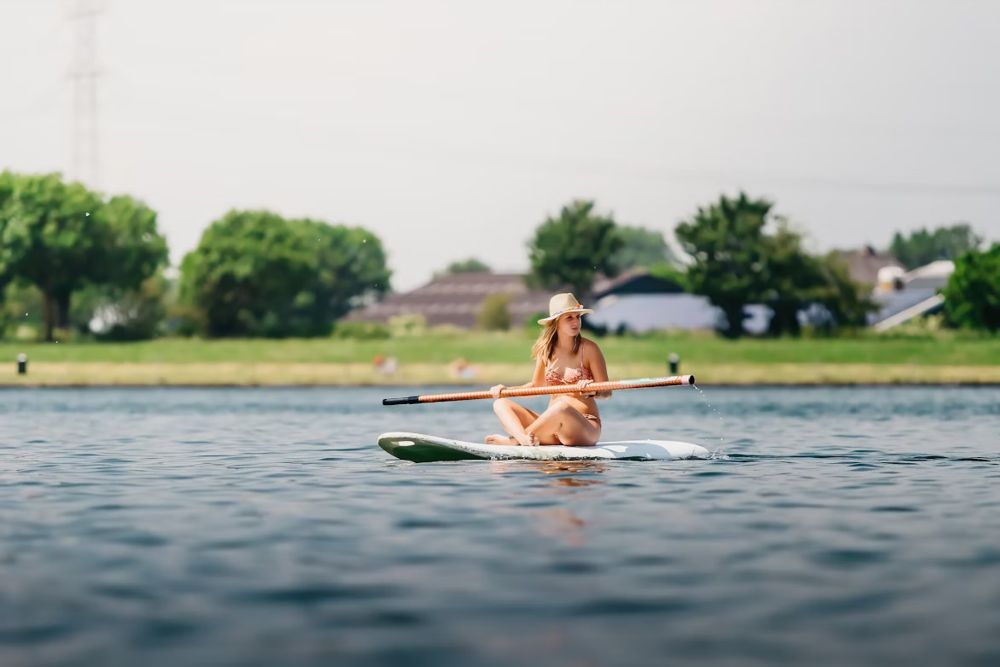
Now that you understand why paddle boarding is truly an all-ages sport, are you ready to begin your lasting paddle board journey? At Boost Surfing, we offer top-quality electric fins for paddle boards, expert advice, and a supportive community to help you navigate the exciting world of stand-up paddle boarding. Follow Boost Surfing for more information and discover the joy of paddling!
FAQs
The topic of the paddle board age limit can still be a bit confusing, so we’ll explore some frequently asked questions to help you ensure a safe and enjoyable experience for everyone on the water.
